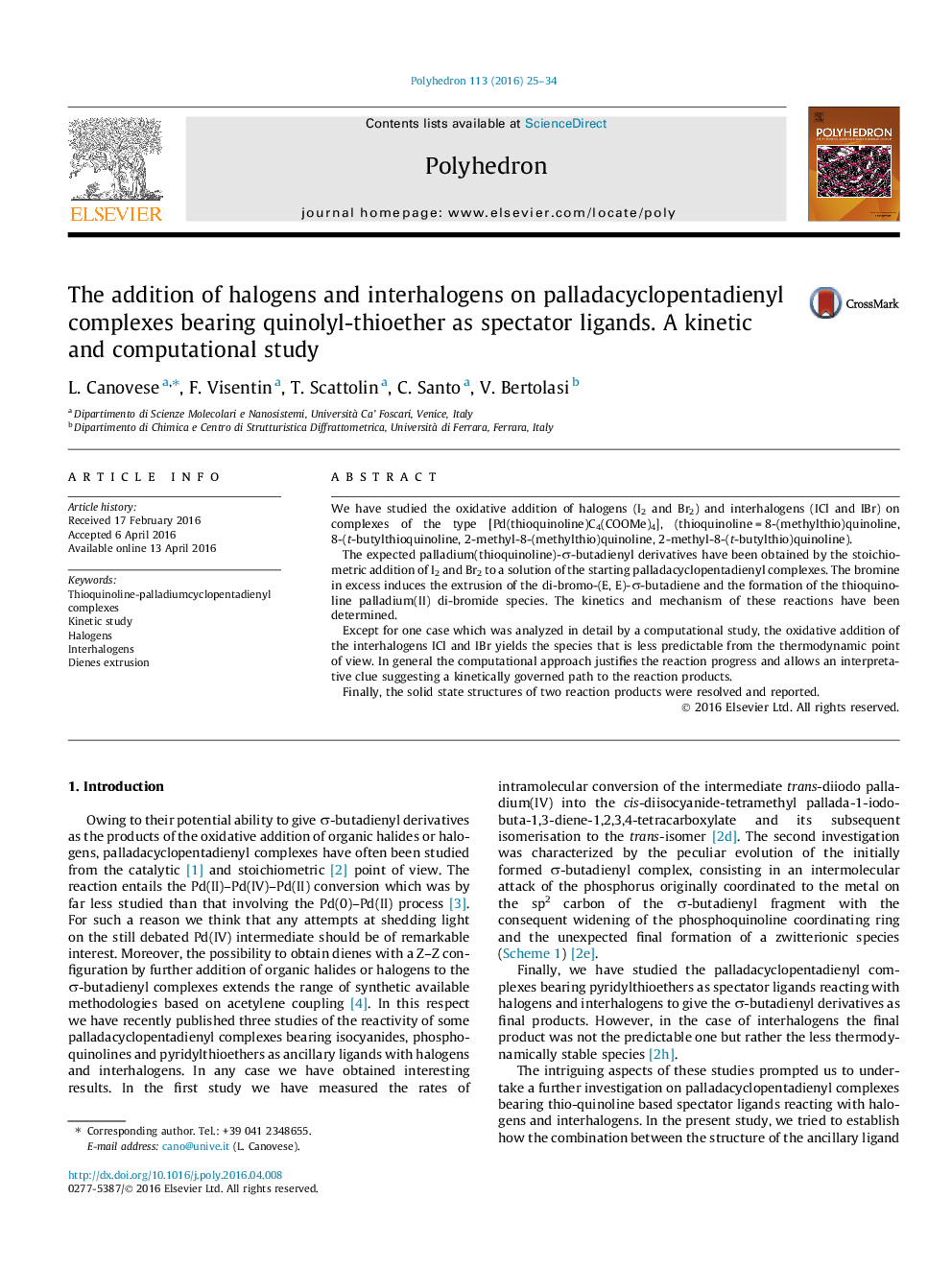| کد مقاله | کد نشریه | سال انتشار | مقاله انگلیسی | نسخه تمام متن |
|---|---|---|---|---|
| 1334235 | 1500227 | 2016 | 10 صفحه PDF | دانلود رایگان |
We have studied the oxidative addition of halogens (I2 and Br2) and interhalogens (ICl and IBr) on complexes of the type [Pd(thioquinoline)C4(COOMe)4], (thioquinoline = 8-(methylthio)quinoline, 8-(t-butylthioquinoline, 2-methyl-8-(methylthio)quinoline, 2-methyl-8-(t-butylthio)quinoline).The expected palladium(thioquinoline)-σ-butadienyl derivatives have been obtained by the stoichiometric addition of I2 and Br2 to a solution of the starting palladacyclopentadienyl complexes. The bromine in excess induces the extrusion of the di-bromo-(E, E)-σ-butadiene and the formation of the thioquinoline palladium(II) di-bromide species. The kinetics and mechanism of these reactions have been determined.Except for one case which was analyzed in detail by a computational study, the oxidative addition of the interhalogens ICl and IBr yields the species that is less predictable from the thermodynamic point of view. In general the computational approach justifies the reaction progress and allows an interpretative clue suggesting a kinetically governed path to the reaction products.Finally, the solid state structures of two reaction products were resolved and reported.
We have studied the oxidative addition of halogens (I2, Br2) and interhalogens (ICl, IBr) on palladacyclopentadienyl complexes bearing heteroditopic quinolyl-thioethers as ancillary ligands. The reactions with halogens under stoichiometric conditions yield the σ-butadienyl derivatives. Br2 in excess yields the free dibromo-(E, E)-σ-butadiene and the quinolylthioether palladium(II) dibromide species, whereas the same reaction with I2 in excess does not induce the extrusion of the diene. The interhalogens react with the starting palladacyclopentadienyl complexes to give the less thermodynamically stable isomers. An interpretation based on computational and mechanistic studies is proposed.Figure optionsDownload as PowerPoint slide
Journal: Polyhedron - Volume 113, 27 July 2016, Pages 25–34
